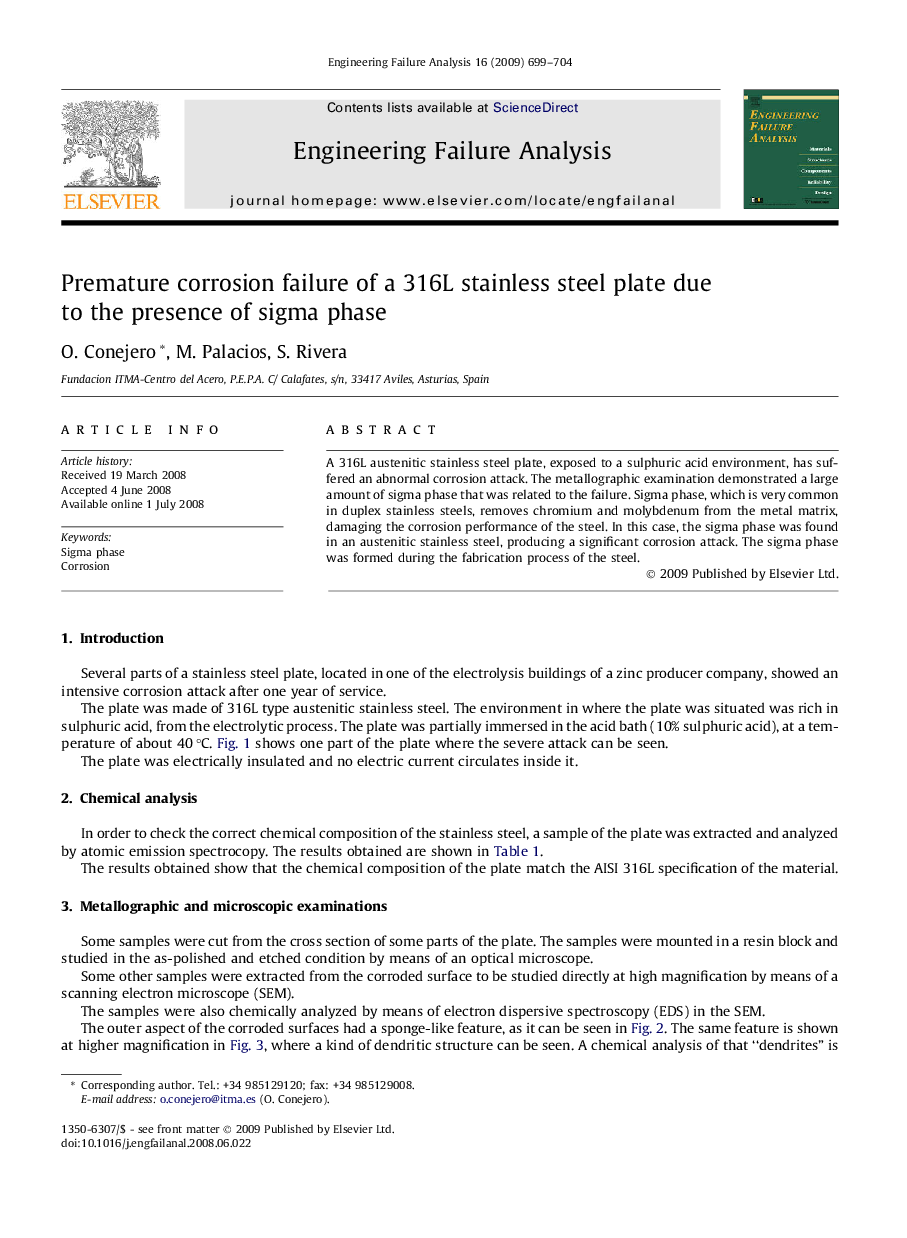| Article ID | Journal | Published Year | Pages | File Type |
|---|---|---|---|---|
| 769530 | Engineering Failure Analysis | 2009 | 6 Pages |
Abstract
A 316L austenitic stainless steel plate, exposed to a sulphuric acid environment, has suffered an abnormal corrosion attack. The metallographic examination demonstrated a large amount of sigma phase that was related to the failure. Sigma phase, which is very common in duplex stainless steels, removes chromium and molybdenum from the metal matrix, damaging the corrosion performance of the steel. In this case, the sigma phase was found in an austenitic stainless steel, producing a significant corrosion attack. The sigma phase was formed during the fabrication process of the steel.
Keywords
Related Topics
Physical Sciences and Engineering
Engineering
Industrial and Manufacturing Engineering
Authors
O. Conejero, M. Palacios, S. Rivera,
